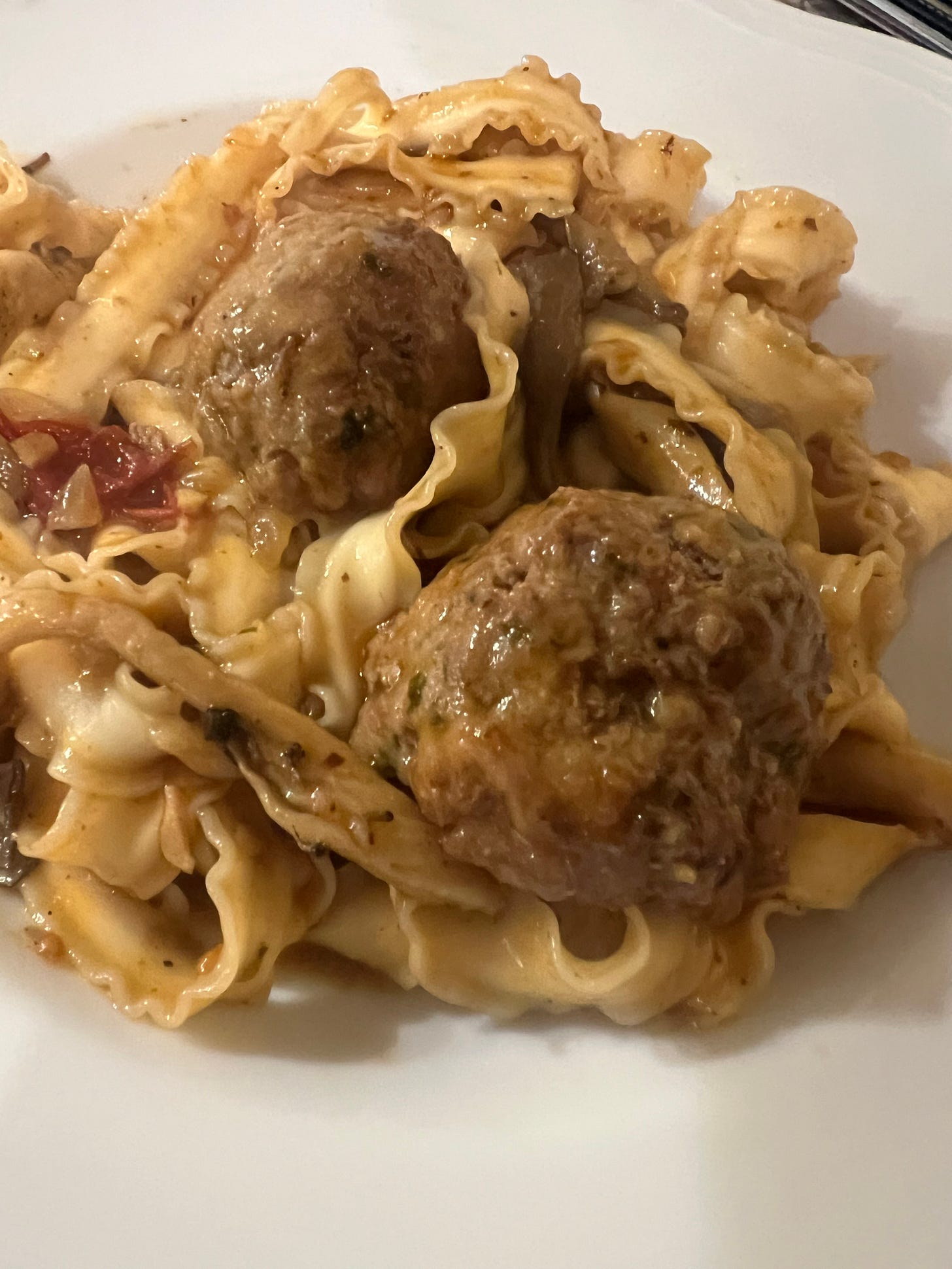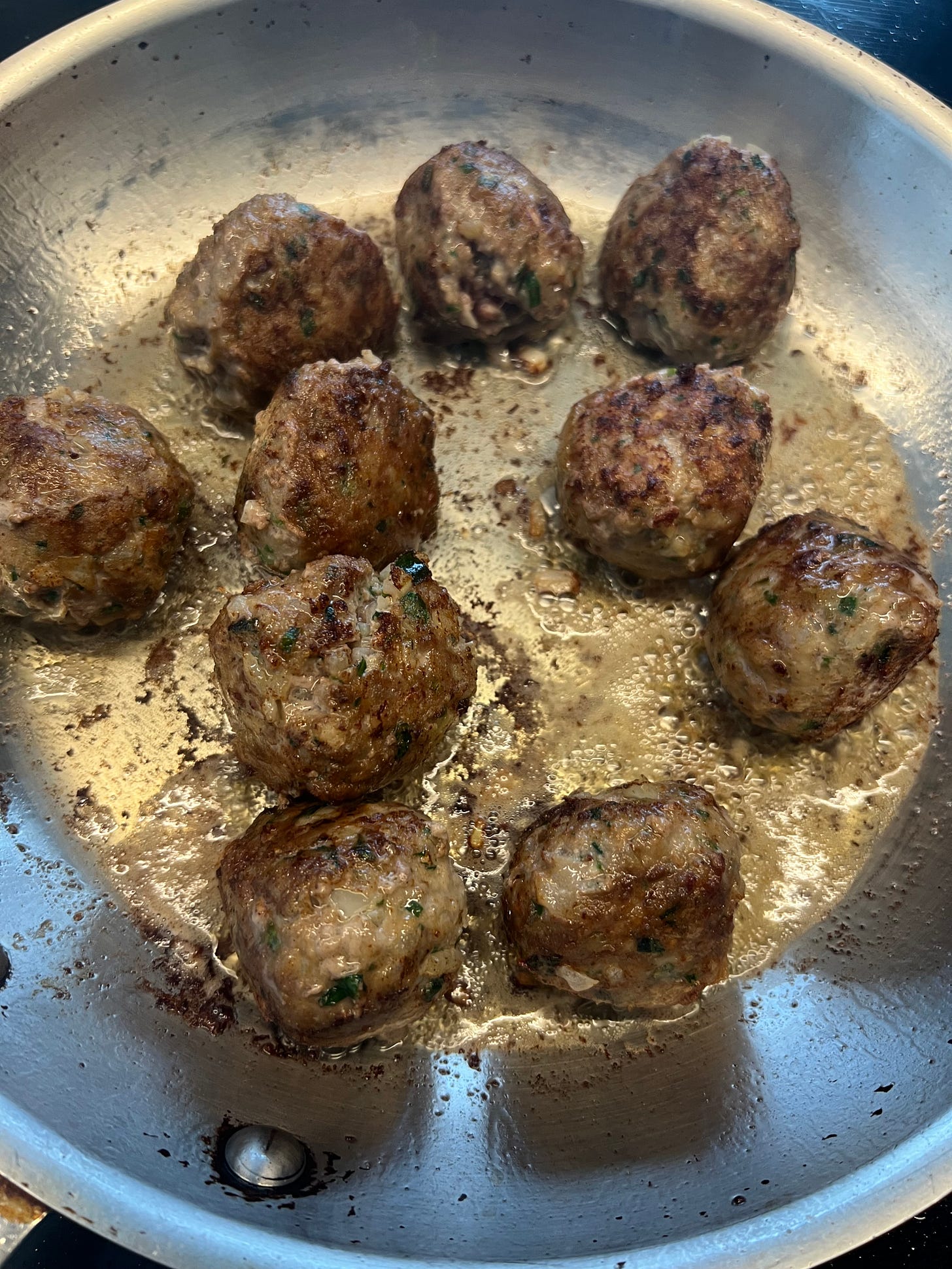Ktzitzot is a Hebrew word that refers to a category of dishes in Israeli cuisine comprised of ground beef, veal, lamb, fish, and/or other ingredients shaped into small forms and either braised or grilled or cooked somehow. You could call them meatballs, patties, or fritters, but in English none of these words encapsulates the vastness and variety of the ktzitzot of Israeli cuisine. Say “meatballs,” and people think spaghetti—to the dismay of every Italian on the peninsula.

An article by Hilik Gurfinkel in the recent journal of Asif: Culinary Institute of Israel, a culinary cultural organization for which I work as a strategic consultant, posited that Israel was “Ktzitzot Nation.” Each culture has contributed its ktzitzot to the Israeli table, from Russian cabbage rolls to Moroccan fish cakes to the kibbe of various Arab cuisines. Chopped meat is economical and efficient. You can stretch it with bread and vegetables to feed more people, more affordably than steak. Despite the appearance of ktzitzot on trendy restaurant menus, they are home cooking, comfort food.

This past weekend, as I was getting ready to go away for an extended trip, I thought to make a batch of braised meatballs for Nate to ensure he didn’t starve. A big pot of meatballs simmering in a rich sauce seemed like the perfect thing for this time of year in New Hampshire—warming, comforting, and well-suited for the freezer.
I turned to a recipe from that Asif article, the beef ktizizot of Rafi Cohen, one of the fathers of new Israeli cooking, whose celebrated restaurant Raphael was beloved for nearly two decades. Cohen once came from Tel Aviv to cook a guest-chef dinner at the James Beard Foundation, and it stands out in my memory as one of my favorite meals of the hundreds I enjoyed during my 27-year tenure at the organization.
Despite Cohen’s esteemed career in professional kitchens, his meatballs are homey. On the surface, his recipe sounds the same as just about any other recipe for meatballs; the ingredients list is short. But it’s the proportions that make these meatballs different—more onion, more garlic, more parsley. Cohen also advises that the cut of meat is key, recommending rib-eye cap, chuck, or neck, ground twice. You might be tempted to skip the step of frying each meatball. My mother made two types of braised meatballs: “Italian,” which she fried before plopping in her red sauce, and “Jewish,” which she didn’t. But the frying is important for the final result, adding both flavor and texture to the meat.
What’s more, standing over the stove frying little patties of ground meat is one of those timeless and eternal kitchen tasks that makes me feel connected to centuries of home cooks. And it perfumes your whole house with the irresistible aroma of a delicious dinner to come.
RECIPE: Rafi Cohen’s Meatballs
Serves 4
For the meatballs
1/2 slice stale white bread or 1/4 cup bread crumbs
1 pound ground chuck or other beef, about 85% lean
2 medium onions, finely chopped
3 cloves garlic, minced
1 cup chopped flat-leaf parsley
1 egg
1 1/2 teaspoons kosher salt
1 1/2 teaspoons freshly ground black pepper
1 tablespoon extra-virgin olive oil
All-purpose flour or fine semolina, for coating
Vegetable oil or additional olive oil, for frying
For the sauce
1/2 cup extra-virgin olive oil
4 or 5 cloves garlic, minced
1 small hot chile, seeded and minced
4 ripe Roma tomatoes, peeled and chopped, or one 14-ounce can whole tomatoes, chopped
1 tablespoon sweet paprika
1 1/2 teaspoons sugar
1 1/2 teaspoons freshly ground black pepper
1 1/2 teaspoons salt
2 cups water or broth
To prepare the meatballs, start by soaking the stale bread in some water for a few minutes. Squeeze it out and tear it into small pieces into a large mixing bowl. To that same bowl, add the ground beef, onions, garlic, parsley, egg, salt, black pepper, and tablespoon of olive oil. If using bread crumbs instead of white bread, add two tablespoons of water. With a wooden spoon, mix well until thoroughly blended. Cover and let sit in the refrigerator for at least 30 minutes so the flavors meld.
Meanwhile, prepare the sauce. In a wide, deep skillet or Dutch oven, heat the olive oil over medium-high heat. Add the garlic and chile and sauté for a minute or two, until fragrant. Add the tomatoes, paprika, sugar, black pepper, salt, and water or broth. Bring to a boil, reduce the heat to a simmer, and cook, uncovered, for about 30 minutes.
To fry the meatballs, place some flour or semolina in a shallow bowl. Remove the meat from the fridge. Heat the vegetable oil in a large skillet over medium-high heat. Oil your hands and shape pieces of the meat mixture into ping-pong-sized balls. Press them to flatten slightly into patties, coat in the flour, tap off any excess, and set in the hot oil to fry. Repeat until all of the meat is used up and in the pan. Fry until nicely browned on the first side, flip, and then fry the second the side. As they are done, transfer the fried meatballs into the simmering sauce.
Simmer gently over low heat, uncovered, for about 20 minutes. Flip the meatballs, and simmer for another 20 minutes. Serve with rice or noodles or Israeli couscous, as shown in the photos above.




